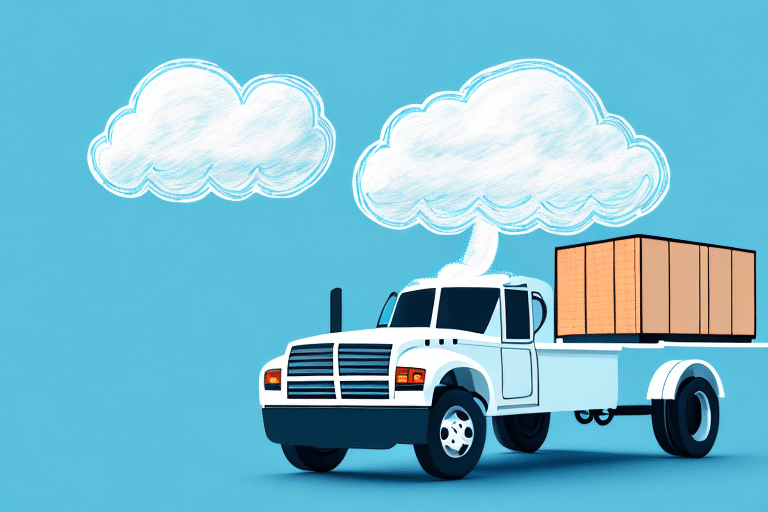Understanding Freight Insurance Coverage: What You Need to Know
As a business owner involved in shipping goods, understanding the importance of freight insurance coverage is critical. The risk of damage or loss during transit is always present, making it essential to protect your business interests and investments. This article provides an in-depth analysis of freight insurance coverage, including its importance, different types of coverage, benefits of comprehensive insurance, common exclusions and limitations, determining the appropriate coverage amount, selecting the best insurance provider, factors affecting premiums, and tips for filing successful claims.
Why Freight Insurance is Crucial for Your Business
Freight insurance safeguards your business against financial losses resulting from damaged or lost goods during transit. Without proper coverage, your business could face significant setbacks and damage to its reputation. While it's impossible to eliminate all transit risks, freight insurance offers a safety net to mitigate potential losses and manage risks effectively.
Additionally, freight insurance can cover unforeseen events such as theft, natural disasters, and accidents, which can cause delays and extra expenses. Having insurance ensures peace of mind, knowing that your business is protected against these unexpected challenges.
Moreover, freight insurance can enhance your business relationships by demonstrating reliability and responsibility to suppliers and customers, potentially leading to better negotiation terms and increased trust.
Different Types of Freight Insurance Coverage
Marine Cargo Insurance
Covers sea shipments, protecting goods transported via maritime routes.
Inland Transit Insurance
Provides coverage for goods moving within domestic inland routes, including rail and road transport.
Air Cargo Insurance
Protects goods transported by air, offering coverage for faster transit times but often at higher premiums due to increased risk.
Ground Transport Insurance
Covers goods transported by rail or road, offering flexibility and coverage suited to shorter distances.
Door-to-Door Insurance
Offers comprehensive coverage for the entire shipping process, from the origin to the destination, ensuring maximum protection.
The level of coverage varies with each type, so it's crucial to assess your specific shipping needs and choose the appropriate insurance type accordingly.
The Benefits of Having Comprehensive Freight Insurance
Comprehensive freight insurance provides extensive coverage for any damage or loss that occurs during shipping, including accidental damage, theft, and loss. This level of coverage offers complete protection, ensuring that your business is safeguarded against a wide range of risks.
Key benefits include:
- Financial Protection: Avoid significant financial losses by having adequate coverage for lost or damaged shipments.
- Peace of Mind: Focus on your business operations without the constant worry of potential transit risks.
- Customer Trust: Build and maintain trust with customers by demonstrating a commitment to reliable and secure shipping services.
According to the Transport Topics report, businesses with comprehensive freight insurance report a 30% reduction in financial losses due to transit-related incidents.
Common Exclusions and Limitations in Freight Insurance
While freight insurance offers extensive coverage, it's essential to understand the common exclusions and limitations within your policy:
- Specific Goods: Certain items may be excluded from coverage, such as perishable goods or hazardous materials.
- Modes of Transport: Some policies may restrict coverage based on the transportation mode used.
- Natural Disasters and War: Events like natural disasters or war may not be covered unless additional coverage is purchased.
- Limited Liability: Insurance providers may impose minimum compensation standards, potentially limiting the coverage amount.
It's crucial to thoroughly review your policy to understand what is and isn't covered, ensuring that you have adequate protection tailored to your shipping needs.
Determining the Right Amount of Coverage for Your Shipments
Accurately determining the appropriate coverage amount is vital to balance adequate protection with cost-effectiveness. Consider the following factors:
- Shipment Value: Calculate the total value of the goods being shipped to ensure full coverage in case of loss or damage.
- Mode of Transportation: Different transportation modes carry varying risks; air freight, for example, may require higher coverage due to increased risk.
- Shipment Volume: Larger shipments may necessitate higher coverage limits to account for the increased value and risk.
- Inflation: Account for inflation to maintain adequate coverage over time.
Using tools like the National Institute for Occupational Safety and Health (NIOSH) guidelines, businesses can better assess and determine the appropriate coverage amounts for their specific shipping needs.
How to Choose the Best Freight Insurance Provider
Selecting a reliable freight insurance provider is crucial for ensuring that your coverage meets your business needs. Consider the following when choosing a provider:
- Reputation: Research the provider's reputation in the industry and read customer reviews to gauge reliability.
- Coverage Options: Ensure the provider offers flexible and comprehensive coverage options tailored to your shipping methods.
- Customer Service: Opt for a provider with responsive and knowledgeable customer service to assist with claims and inquiries.
- Financial Stability: Verify the provider's financial strength to ensure they can fulfill claims if necessary.
A study by NAICS highlights the importance of financial stability in insurance providers, noting that financially stable companies are more likely to honor claims promptly and efficiently.
Top Factors that Affect Your Freight Insurance Premiums
Several factors influence the cost of freight insurance premiums, including:
- Shipment Value: Higher shipment values typically result in higher premiums due to increased risk exposure.
- Type of Goods: Perishable or hazardous materials may incur higher premiums due to the specialized handling and increased risk.
- Destination: Shipping to areas with higher risk levels, such as regions prone to natural disasters, may increase premiums.
- Mode of Transport: Air freight generally costs more to insure compared to ground or sea transport due to heightened risks.
- Coverage Limits: Higher coverage limits lead to higher premiums as the insurer assumes greater financial responsibility.
- Claims History: A history of multiple claims can result in higher premiums as it indicates increased risk.
Understanding these factors can help businesses make informed decisions to manage and potentially reduce their insurance costs.
Essential Tips for Filing a Successful Freight Insurance Claim
Filing a successful freight insurance claim requires meticulous attention to detail and adherence to the insurer's procedures. Here are essential tips to ensure a smooth claims process:
- Documentation: Maintain detailed records of the shipment, including invoices, receipts, and photographs of the goods and any damage incurred.
- Timely Filing: Submit your claim as soon as possible after the incident occurs to avoid delays or denials.
- Accurate Assessment: Provide a thorough and accurate assessment of the loss or damage to support your claim.
- Communication: Maintain clear and open communication with your insurance provider throughout the claims process.
According to the American Association for Insurance Services, well-documented and promptly filed claims are more likely to be resolved quickly and favorably.
Understanding the Claims Process and Settlements in Freight Insurance
The freight insurance claims process involves several steps that require careful navigation to ensure successful settlements:
1. Incident Reporting
Immediately report any loss or damage to your insurance provider, providing all necessary details and documentation.
2. Documentation Submission
Submit all required documents, including proof of shipment, invoices, photographs, and any relevant incident reports.
3. Claims Assessment
The insurance provider will assess the claim, which may involve an investigation or appraisal of the damages.
4. Settlement Negotiation
Negotiate the settlement terms based on the assessment to reach a mutually agreeable resolution.
5. Compensation Disbursement
Once the settlement is agreed upon, the insurer will disburse the compensation to cover the loss or damage.
To ensure a smooth claims process, work closely with your insurance provider, provide accurate and comprehensive documentation, and adhere to all deadlines and requirements outlined in your policy.
Understanding each step of the claims process can help you navigate challenges effectively and secure the compensation you are entitled to.
Conclusion
Freight insurance is indispensable for any business involved in shipping goods. It protects your investments and operations by mitigating risks associated with transit, such as damage or loss. By understanding the different types of coverage, determining the appropriate coverage amounts, choosing a reputable insurance provider, and knowing how to file successful claims, you can ensure that your business remains secure and resilient against unforeseen transit-related challenges.
Take proactive steps to secure comprehensive freight insurance coverage today, and safeguard your business interests and investments for the future.






















